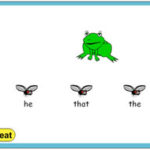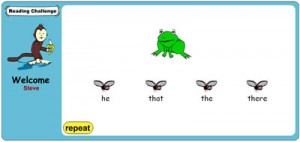
Students’ scores on a national reading assessment have remained relatively flat for nearly 40 years, with students ages 9-17 scoring an average of 255 points on a scale of 0 to 500. As educators work hard to bring that average up, many are excited about the potential for new technologies to help.
Some schools, for example, are using tools such as speech recognition technology to give students a personal reading coach inside the classroom. Others are taking advantage of mobile technology to help students build the skills they need for reading fluency in their spare time, wherever they might be, by downloading audio books or applications to their mobile phones or mp3 players.
“Technology changes the whole game,” said Matt Walker, vice president of sales and marketing for Recorded Books, a company that provides audio books and other products for schools.
Meanwhile, there is new research to suggest that this approach can be successful: A PBS study found that mobile applications can help increase students’ vocabulary. That could be welcome news for educators who have seen students’ reading scores remain largely flat in national exams.
Long-term trend results in reading from the National Assessment of Educational Progress (NAEP) are available on the National Center for Educational Statistics web site for 12 assessment years, going back to the first in 1971.
The average reading score for 9-year-olds was 220 points in 2008, increasing 4 points since 2004 and 12 points in comparison to 1971. While the average score for 13-year-olds in 2008 was higher than in both 2004 and 1971, it was not significantly different from the scores in some assessment years in between, at 260 points. The average reading score for 17-year-olds was higher in 2008 (286 points) than in 2004 (283 points) but was not significantly different from the score of 285 points in 1971.
Scientific Learning Corp.’s Reading Assistant software aims to change that. The program is a guided oral reading tool that is used to build fluency. The software uses speech verification technology to monitor for signs of difficulty in reading—which include hesitations, silence, mispronunciations, and other cues—and provides assistance when students stumble or get stuck.
“Reading Assistant was developed with the idea of bringing additional reading tutors to students through computers,” said Maura Deptula, projects manager for Scientific Learning. “The computer can listen to students the way a teacher can and prompt the student when he or she gets stuck.”
The software automatically calculates a student’s fluency rate, and there is a direct correlation between fluency and comprehension, said Liz Kline, product manager for Reading Assistant. The software not only helps teachers identify problem areas but also allows them to make sure each student’s reading has been assessed.
“Normally, a teacher has to sit with a stopwatch while the student is reading—so it’s a big time saver,” she said.
Jacky Egli, executive director of Bridges Academy in Florida, said she’s used Reading Assistant for about two years and is constantly amazed by the confidence that students build using the program. Bridges, a private school for students with disabilities, focuses on helping students close the academic gap.
“You see changes by January or February. Reluctant readers are becoming more confident readers,” she said.
Getting a better read on students’ reading skills
Diagnostic Online Reading Assessment (DORA), created by Let’s Go Learn and distributed by Curriculum Associates, is another online tool being used to help improve reading. Theresa McKee, instructional supervisor for secondary English in Virginia’s Newport News Public Schools, said DORA’s individualized and differentiated assessments made the tool a must-have in her district. The program is used at all of the district’s middle schools and for some at-risk high school students.
“We administer the test to all middle school kids in the fall, about two or three weeks into the school year, and then we assess them again in April,” she said. “Teachers are then able to do individual conferences to talk about each student’s scoring.”
DORA quickly identifies student’s strengths and weaknesses. That helps teachers group students based on their skill level, so teachers can better provide individualized instruction.
DORA is a comprehensive, web-based assessment that diagnostically assesses students’ reading abilities. Functioning like a reading specialist, it adapts to students as they respond to each question in the online program, getting harder or easier as needed to complete the diagnosis. DORA’s interactive style is designed to make testing fun, engage students, and enable them to initiate tests remotely, its maker says. The assessment program uses visual and audio tools to help test students’ abilities.
McKee said she has seen DORA enable teachers to apply the appropriate strategies to help students improve their reading by one or two grade levels in a semester.
Support for reading on the go
An April paper, written by Nian-Shing Chen, Daniel Chia-En Teng, and Cheng-Han Lee and presented at the 2010 Institute of Electrical and Electronics Engineers (IEEE) International Conference on Wireless, Mobile, and Ubiquitous Technologies in Education, looked at the attempt to integrate the strengths of mobile technology into paper-based reading activities to enhance learners’ reading comprehension.
“While conventional print text provides very limited information in fostering learners’ comprehension, integrating mobile technology with paper prints is a possible way to offer learners essential content-related resources to make sense of the text,” they wrote.
The study from PBS Kids found that students who download mobile applications to their smart phones can boost their vocabulary significantly within just a few weeks.
The study found that vocabulary improved as much as 31 percent in children who played with the Martha Speaks Dog Party app, based on the popular PBS Kids’ television series Martha Speaks, about a dog who eats a bowl of alphabet soup and gains the power of human speech.
The app features four different games. For example, in “Chow Time,” children build vocabulary by helping dogs clean their plates—identifying different shapes (like “triangular” or “rectangular”), patterns, colors, and objects (from “astronauts” to “instruments” and “vehicles”). Martha, “the world’s only talking dog,” explains what each word means.
To see how well mobile apps can help students learn, the study first tested the vocabulary level of a group 90 Title 1 students, ages 3 to 7. Then, the children each were given two weeks with an iPod Touch containing the Martha Speaks app. The study followed how the students used the iPod, for how long, and in what context. A voice mailbox was created for parents to share their observations about their child’s experience.
On average, the study found that children played with the iPod Touch for a total of five hours across the two weeks, with half that time spent playing the Martha Speaks app. The study didn’t actually require kids to play with the application; all play was self-initiated. At the end of the two-week period, the students were given another vocabulary test, which revealed an increase of as much as 31 percent.
“Mobile apps can be a great learning tool in the hands of children,” said Lesli Rotenberg, senior vice president of children’s media for PBS. “This research is important in helping to better understand and guide the development of new apps that improve the value of children’s screen time with significant educational outcomes.”
That is particularly relevant as smart phones and mobile devices have become increasingly popular among families, PBS said—and parents are faced with a proliferation of mobile apps designed for kids. According to a recent Nielsen study, smart phone usage is 12 percent higher in households with children than in other households.
The use of mobile technology to help teach reading is something that Recorded Books’ Walker said he understands.
“So much about what kids do is about what they can download and take with them. That’s how they operate now,” he said.
Recorded Books’ One-Click Audio Academic Collection is similar to an iTunes store for audio books.
“We operate on a multi-access model. So if a teacher wanted all of the students in his or her class to study one book, [the students] could all download it to their iPods” or other mp3 players, he said, emphasizing that One-Click Audio is a supplemental tool. “When the student can listen along while reading the book, it can be helpful” in developing reading skills, he added.
The library features more than 800 downloadable titles, with nearly 500 geared toward students in grades K-8 and another 300 or so geared for ninth through 12th graders. Titles include classics such as The Call of the Wild, as well as contemporary books like Diary of a Wimpy Kid.
Links:
Reading statistics from the National Center for Educational Statistics
Note to readers:
Don’t forget to visit the How technology can help with language instruction resource center. Learning a foreign language is an increasingly important skill for success in the global economy—and learning to speak and read English fluently is vital to the success of ESL students. Fortunately, students and educators have more language acquisition resources at their disposal today than ever before.
Go to:
How technology can help with language instruction
- 3D equipment helps school lessons take on a whole new dimension - September 3, 2010
- IETF: AT&T’s net neutrality claim is ‘misleading’ - September 3, 2010
- To boost security, Facebook adds remote logout - September 3, 2010


Comments are closed.